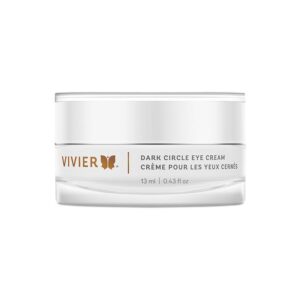If you’ve been looking at treatment options for permanent hair removal then you’ve probably come across both laser hair removal and IPL (Intense Pulsed Light) and may be wondering, “What’s the difference?”
In this article, we clear up some misconceptions and shoot straight when talking about the difference between laser hair removal and IPL hair reduction. After reading this, you’ll know what to look out for.
Both treatments have been available commercially since the mid-1990s but are distinctly different. Many hair removal clinics claim to provide “laser” hair removal, when in fact they use IPL. Both hair removal treatments produce light energy, which is then absorbed into the dark pigment of the hair and causes damage to the hair follicle. The goal is to destroy the hair root and reduce hair growth (without damaging the surrounding skin).
Light is absorbed best by and attracted to dark objects. We all know when we wear dark clothes in summer, we’re much hotter compared to when we wear white or light-coloured clothes. It’s true!
Darker clothes absorb the light energy and convert it into heat, while lighter clothes reflect it. Similarly, laser energy is absorbed more readily by dark pigment in the skin, (but with much more speed and intensity). If we get more technical, the dark target matter (chromophore) can be naturally-occurring or artificially introduced. Melanin is the primary chromophore for most lasers.
Hair removal lasers selectively target one of three chromophores: carbon, haemoglobin, or melanin.
Intense pulsed light (IPL) devices are different from lasers. These devices produce a broad spectrum of wavelengths (like a light bulb), and the light is not focused as a concentrated beam. A range of different wavelengths is dispersed at various depths which are effectively absorbed by the hair follicle.
Lasers utilize one wavelength to selectively target one specific chromophore, melanin. This allows for deeper penetration and the energy is directed straight to the target and not absorbed by the other chromophores in the path of the beam. Lasers will selectively destroy specific targets and not cause harm to the surrounding tissue when used properly. Laser machines are set to emit the exact wavelength required to treat hair follicles.
The first use of IPL documented in academic literature took place in a study in 1997, where hair loss was found to be a side effect of skin treatment with IPL. This study used an IPL device called Photoderm VL which was used to treat facial port wine stains (birthmarks).
Researchers found that the lesions responded well to the first treatment and completely cleared up after the fourth. Soon after this study, the authors published two cases of permanent removal of facial hair. The same author also published an article which successfully used IPL to treat essential telangiectasias (ETE), another skin condition. Of course, over time the technology has improved vastly and resulted in the creation of more powerful and predictable IPL devices.
Laser hair removal was first developed in 1960. Initial designs were sadly slow and resulted in burns, but the technology quickly progressed. In fact, the first FDA-cleared laser for hair removal became available in 1964.
Laser hair removal increased in popularity after that, and the FDA finally cleared an at-home laser hair removal kit, the Tria Laser 4X for permanent hair reduction in 2008.
IPL uses a source of broad-spectrum, visible light. This light is specially controlled to remove shorter wavelengths and devised to target specific structures. In hair removal, it is designed to target the melanin pigment in the hair, while in other uses such as the treatment of spider vein it targets the hemoglobin in the blood.
In hair reduction treatments, the light energy is absorbed, transferring as heat energy which warms the hair, causing damage to the follicle.
Laser hair removal also uses the same mechanism of heating the hair and damaging follicles via light energy. However, it is slightly different to IPL in that it utilizes the specific properties of lasers. Lasers can be extremely controlled and focused into a small area and travel a large distance without spreading out like light normally would. They can also produce beams that only contain one color of light. These characteristics are beneficial in hair removal because light can travel into the follicle, concentrating heat energy at the root of the follicle to reduce hair growth.
The key difference between laser and IPL is the type of light used. IPL is a broadband pulsed light source, whereas laser is a monochromatic coherent light source. Both methods target the melanin in the hair follicle and deliver permanent results. Professional laser treatments are well-suited to a wide range of skin tones.
Energy, frequency, and hair color are the determining factors in the efficacy of laser treatment. The light source, laser or intense pulsed light plays an essential role in determining which skin tone will benefit the most from the hair removal treatment.
Which would you prefer – hair removal at home or in a salon or spa? Doing it yourself at home saves time and money in the short term, but you’ll have to do it more regularly and will have a less than ideal result. So, overall, it may not be a huge savings. Having hair removal treatment in a salon requires professional expertise but leads to faster, more predictable results with a higher cost. Either way, you’ll get similar results – a considerable reduction in body hair.
Choosing between IPL and laser treatment is a personal decision. Your skin tone and hair color can affect the results you achieve with both lPL and laser hair removal, so it’s important you understand which is best for you to have a desirable outcome.
As broad-spectrum light naturally spreads out, the coverage area of IPL hair removal devices is greater than laser hair removal devices. This may mean treatment times could be quicker because larger areas can be treated. The treatment may also be cheaper, but you may find that you need more sessions to achieve the same results.
IPL uses a broad spectrum of light, which means it can have different uses. It can be used to treat a variety of different skin conditions very successfully. It can also be altered specifically to match different skin and hair types within a treatment type. For example, a variation of IPL called VPL, variable pulsed light, has been developed.
VPL allows for settings to be modified to best suit the skin and hair that is being treated. Different skin tones have different requirements for light-based hair removal devices and coarser hair in areas like the bikini line hair require different treatment settings compared to finer hair on the arm.
The nature of lasers means that laser hair removal devices can focus light into the hair follicle. LHR can, at time, achieve quicker results since single hairs are heated to damaging temperatures faster.
LHR is also better suited to people with darker skin as dark skin absorbs more light than pale skin due to the amount of melanin (pigment) it contains. Similarly, darker hair absorbs more light than pale hair. Therefore, there is a risk that the darker skin can be heated up. (However, there are some IPL systems which are suitable for darker skin.)
Both IPL and laser hair removal techniques have the same side effects. You can expect some skin irritation in the form of redness, swelling, itchiness or tenderness. However, this is normally short-lived and no more than a day. Treat the skin irritation like a sunburn and keep it moisturized.
The skin will be more sensitive to sunlight after both methods, so use adequate sun protection on the skin both before and after treatment. Avoid scratching the skin as it may be more delicate and keep the skin clean to prevent infection.
Whether you’re booking into a clinic or investing in an at-home IPL machine, it’s crucial to assess whether you’re a suitable candidate for the treatment first.
Not every skin tone is suitable for IPL. Because the technology targets the pigment in the hair, there needs to be a notable difference between your skin tone and your hair colour. Most experts advise against using an IPL machine on black skin, as there is a risk of damage and discoloration, and light blondes and redheads should also sit this treatment out.
The best results are likely to be seen in somebody who has thick, dark hair and relatively light skin. Those with underlying skin or medical issues including PCOS or thyroid issues may find they require more treatment sessions. However, in a clinic setting, medical conditions are always discussed during the consultation visit. In addition, any issues that may compromise the treatment are discussed.
There are certain conditions which preclude clients from being treated with light-based technology. For example, women who are pregnant or breastfeeding or anyone taking medications that cause them to be light sensitive are not ideal candidates for this treatment.
Neither IPL nor laser hair removal techniques will grant immediate results. Unlike waxing and threading, you won’t leave the treatment session with completely smooth, hair-free skin. The hair will instead fall out as they die over the next few weeks and those which have not been affected due to the stage of the growth cycle that they were in at the first treatment will require further sessions. You will be able to shave in between sessions though, as you don’t need to grow out the hair for subsequent treatments.
However, the benefit of the light-based treatments over waxing and threading is that over time you will achieve permanent reduction of hair growth. Hair that does grow will grow back slower, so you won’t need to shave as often. They will also likely grow back thinner and even paler, so they are less obvious.
Most people find they can achieve permanent hair loss within 1 to 10 treatments, with an average of 6 sessions for adequate results. You will occasionally require a “touch-up” every few months or annually, but overall, you’ll see a significant difference in the amount of hair growth you experience.
There are now many at-home IPL and laser hair removal kits available on the market, many of which are FDA-cleared. They use the same technology that dermatology clinics and skin salons use but have been designed specifically so that they’re safe to be used by untrained and unqualified people. Using the same science as professional machines, they achieve impressive results at an affordable price and allow you to treat your skin without leaving the house. Most are small enough to be packed into a suitcase, so you can travel with them.
To help you decide which is better for you, here are the top benefits of both IPL and laser hair removal.
| IPL | Laser |
| Use to treat multiple conditions Cheaper Quicker treatment time per session May be better suited for light-coloured hair | Better suited to darker skin and hair Quicker results overall Requires fewer treatment sessions |
Hop onto our shopping site to find a great product for yourself.
Hop on to check details of our laser hair removal and IPL services.
You can also book a consultation with one of our doctors to Look. Feel. Be.
Read More Blogs:
Take a Look at our Best Selling Products



































